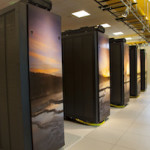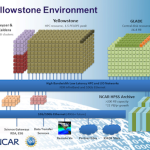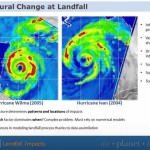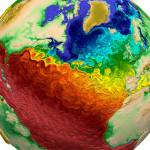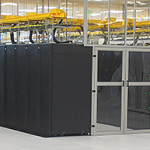“A new supercomputer, dubbed Cheyenne, is expected to be operational at the beginning of 2017. The new high-performance computer will be a 5.34-petaflop system, meaning it can carry out 5.34 quadrillion calculations per second. It will be capable of more than 2.5 times the amount of scientific computing performed by Yellowstone.”
DDN Storage Enables NCAR to Advance Weather and Climate Science
Today DDN announced that the National Center for Atmospheric Research (NCAR) has selected DDN’s new SFA14K high-performance hyper-converged storage platform to drive the performance and deliver the capacity needed for scientific breakthroughs in climate, weather and atmospheric-related science to power its Cheyenne supercomputer. “Having a centralized, large-scale storage resource delivers a real benefit to our scientists,” said Anke Kamrath, director of the operations and services division at NCAR’s computing lab. “With the new system, we have a balance between capacity and performance so that researchers will be able to start looking at the model output immediately without having to move data around. Now, they’ll be able to get right down to the work of analyzing the results and figuring out what the models reveal.”
Video: Introduction to the Yellowstone Supercomputer
In this video, Patrick Nichols from the Computational and Informational Systems Laboratory presents: Introduction to the Yellowstone Supercomputer. Yellowstone is NCAR’s 1.5-petaflops high-performance IBM iDataPlex cluster, which features 72,576 Intel Sandy Bridge processors and 144.6 TB of memory.
Video: Next-Gen Hurricane Prediction
“Since Hurricane Katrina made landfall in 20015, storm prediction technology has seen dramatic forward movement, from improved software to better use of observations and increased computing power – all aimed at giving emergency decision makers more time and specifics to help protect lives and property. The expert panelists in this Congressional Briefing outline research advances that have led to better forecasting of hurricane and tropical storm weather and impacts. And they spotlight research directions that hold promise for future improvements.”
Supercomputing Global Ocean Temperatures with ACME
Over at Live Science, Shannon Hall writes that new global map of the world’s oceans is so visually stunning that it could be mistaken for art. Computed on LANL supercomputers, the simulation is a component of the DOE’s Accelerated Climate Model for Energy (ACME), which is expected to be the most complete climate and Earth system model once it is finished.
NCAR Taps Globus Plus and GPFS in a “Dropbox for Big Data”
NCAR has implemented an enhanced data sharing service that allows scientists increased access to data and improved capabilities for collaborative research.

